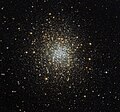File:Palomar 2 Hubble.jpg
Appearance

Size of this preview: 643 × 599 pixels. Other resolutions: 257 × 240 pixels | 515 × 480 pixels | 824 × 768 pixels | 1,098 × 1,024 pixels | 2,197 × 2,048 pixels | 4,146 × 3,865 pixels.
Original file (4,146 × 3,865 pixels, file size: 10.9 MB, MIME type: image/jpeg)
File history
Click on a date/time to view the file as it appeared at that time.
| Date/Time | Thumbnail | Dimensions | User | Comment | |
|---|---|---|---|---|---|
| current | 08:38, 17 April 2013 |  | 4,146 × 3,865 (10.9 MB) | Fabian RRRR | {{Information |Description='''Palomar 2 - A unique cluster: one of the hidden 15''' Globular clusters are relatively common in our sky, and generally look similar. However, this image, taken using the NASA/ESA Hubble Space Telescope, shows a unique ex... |
File usage
The following page uses this file:
Global file usage
The following other wikis use this file:
- Usage on ar.wikipedia.org
- Usage on ckb.wikipedia.org
- Usage on cs.wikipedia.org
- Usage on de.wikipedia.org
- Usage on el.wikipedia.org
- Usage on fr.wikipedia.org
- Usage on lb.wikipedia.org
- Usage on pl.wikipedia.org
- Usage on pt.wikipedia.org
- Usage on ru.wikipedia.org
- Usage on sv.wikipedia.org
- Usage on tr.wikipedia.org
- Usage on www.wikidata.org
